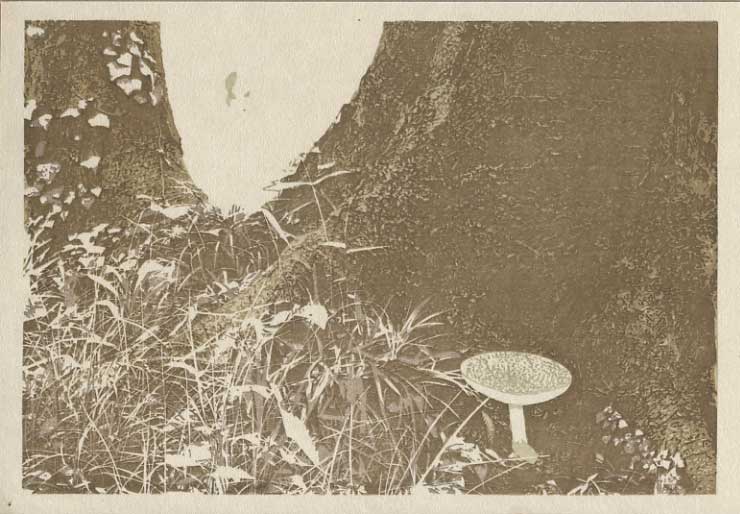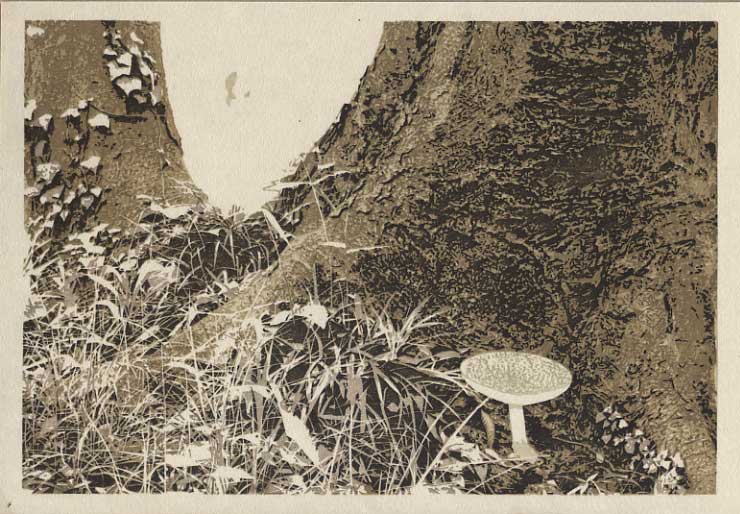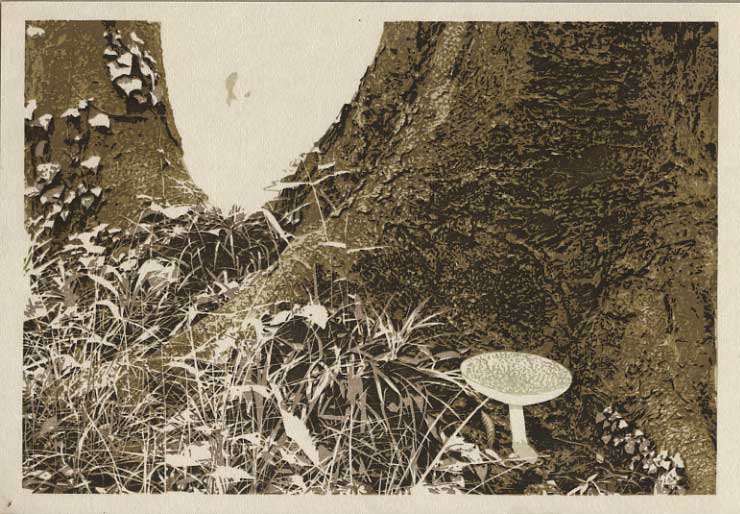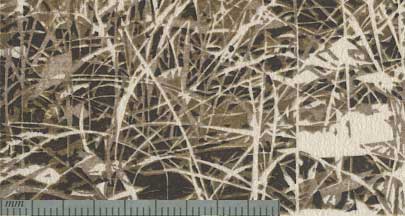Posted by Dave Bull at 10:04 AM, July 31, 2009
Continued from [Forest in Summer - 12] | Starting point of the thread is [Forest in Summer - 1]

Here are the next few impressions.
It's going a bit slowly - the main reason for that is the extremely high humidity here this week. The rainy season was 'officially' declared over in the Kanto region a few days ago, but somebody forgot to tell the clouds!
We've got one of those stationary fronts parked over Japan at present, and the rain has been pretty much unceasing; down in the west end of the country there have been dozens of fatalities from floods and landslides. No danger here in the urban area, but it does make it difficult to control the moisture in the paper. Especially with these wide impressions, the paper really tends to get soggy.
So after each impression, I put slips of dry paper in between the printing sheets to try and pull some of the excess moisture out. It's difficult to get it exactly right ...
Anyway, here is the third tone on the tree area:

... and the fourth:

It looks interesting, doesn't it! Makes me think I should abandon all the other colours that I have planned, and make this a 'sepia' print!
But now that I've got the tree this far, I can see that the depths on these tones are not all correct, and - because I am an experienced hiker! - I know which way to go to fix them ...
Hiking?
Yes! Although I haven't done such a thing in more than thirty years, I did enjoy a lot of hiking/backpacking when I lived in Canada. I took trips with friends of course, but now and again I went 'out there' by myself. The longest trip I made was a one-week solo backpack in the Manning Park region of southern British Columbia. I had the Greyhound driver drop me off at a place of my choice along the highway, and then headed up into the mountains, into an area with no established trails or routes.
Six days later I emerged (safely!) at the park office, and got another bus home. I had prepared well for the trip, and had studied techniques of back country 'navigation'. One kind of 'trick' that I learned was that when taking a compass bearing on a distant destination, and then heading off for it, you never try and 'shoot directly' at your target, but you make an intentional error on one side of it. For example, suppose you are heading for a river, intending to locate a particular place where it is narrow enough to cross easily. If you head directly for that spot, then when you arrive at the river but find that you are a little off, you have no idea which way to head to find the crossing.
But if you have intentionally plotted a path that will strike the river a bit upstream (or whatever) from the intended spot, then you know when you get there that your target is almost certainly downstream.
And so it was with this print. I knew that the fourth tone level would be a strong black. No problem there. But I didn't know where to 'place' the second and third. It is extremely difficult to get them correct, because the visual appearance is completely different once the fourth level is in place. So I used my hiking experience and made my 'error' on the light side, knowing that if indeed I didn't get it right, I would then know which way to go to fix it.
And so it turned out; levels two and three are indeed wrong, and yes, they are too light. But that's easy to fix - one more impression of level two:

... and once more (lightly) for level three:

Now that's a tree with some nice depth to it!
We're not finished with this tree yet, but there is no way that I can properly gauge the next tone value until the greens are in place. I'll start them tomorrow morning.
I also have to report that the paper - Echizen Hosho from Ichibei Iwano - is handling very well. We've had six full-bodied impressions now, with any number of ups and downs in the moisture level of the paper, and the registration is still holding tight, razor sharp - on every single one of the 112 sheets in the stack!
Let's look at a couple of closeups (ruler is showing millimeters). The first one is in the corner near the registration mark:

... and the other is at the other end of the paper, far from the mark:

In both cases, I've still got delicate 'hair-line' areas staying open, even though six impressions now surround them. This is good paper! (And it's also a pretty nice demonstration of just how accurate the very 'simple' Japanese corner registration technique is!)

The thread continues in [Forest in Summer - 14] ...
